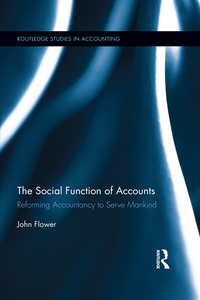

In table 2.3, you can find data from the classroom experiment on German car exports and US soybean exporters (for instructions see page 36). Use Germany as the domestic country and assume w=0.2 in the beginning. Order book cars Sell Buy $ 26 3 1 126 25 1 1 121 21 2 120 1 117 Order book soybeans $ Sell Buy 123 1 1 26 122 1 2 25 120 2 2 22 110 1 Table 2.3: Order book for cars and soybeans OSGES a) Explain the reason why the number of cars exported is increasing with an increase in w. b) Calculate the prices (in ) at which the goods are traded. If there is a difference between seller cost and buyer value, assume that they split the remaining surplus half-half. c) Calculate the amount of $ and needed for trade and explain in which directions this affects the exchange rate. d) Assume that we get deflation of 50% in the US, which affects buyer values and seller costs there. Explain which exchange rate you expect and relate this to the purchasing power parity. 36 Chapter 2. Exchange rate and purchasing power parity class EX Trade and exchange rate Half of the participants live in the Eurozone, can sell a car and buy a freight container of soybeans. The other half live in the US, can buy a car and sell a container of soybeans. Everyone calculates in their own currency, in or $. Each participant will be told the minimum cost of production that they should calculate with as a seller and the maximum value they would like to pay as a buyer. If no trade is concluded, no production costs are incurred. With a buy order, participants determine the price, i.e. how many or $ they want to pay for a car or the soybeans. In the same way, with a sell order they determine the minimum price in or $ they want to charge. All orders are publicly displayed in an order book. Each person can only place two orders according to their role: A buy order and a sell order. Each of the two orders can be replaced by a new order with a different price. After 2 minutes, the market closes. The highest buy orders and the lowest sell orders are then executed. This is followed consecutively by the next best orders as long as an exchange rate can be found that complies with the orders. Market prices and the exchange rate then correspond to prices of the last feasible transaction and determine the execution of orders. If there is excess demand or supply at the market prices, the allocation is decided randomly. A participant is drawn at random for the payoff. In table 2.3, you can find data from the classroom experiment on German car exports and US soybean exporters (for instructions see page 36). Use Germany as the domestic country and assume w=0.2 in the beginning. Order book cars Sell Buy $ 26 3 1 126 25 1 1 121 21 2 120 1 117 Order book soybeans $ Sell Buy 123 1 1 26 122 1 2 25 120 2 2 22 110 1 Table 2.3: Order book for cars and soybeans OSGES a) Explain the reason why the number of cars exported is increasing with an increase in w. b) Calculate the prices (in ) at which the goods are traded. If there is a difference between seller cost and buyer value, assume that they split the remaining surplus half-half. c) Calculate the amount of $ and needed for trade and explain in which directions this affects the exchange rate. d) Assume that we get deflation of 50% in the US, which affects buyer values and seller costs there. Explain which exchange rate you expect and relate this to the purchasing power parity. 36 Chapter 2. Exchange rate and purchasing power parity class EX Trade and exchange rate Half of the participants live in the Eurozone, can sell a car and buy a freight container of soybeans. The other half live in the US, can buy a car and sell a container of soybeans. Everyone calculates in their own currency, in or $. Each participant will be told the minimum cost of production that they should calculate with as a seller and the maximum value they would like to pay as a buyer. If no trade is concluded, no production costs are incurred. With a buy order, participants determine the price, i.e. how many or $ they want to pay for a car or the soybeans. In the same way, with a sell order they determine the minimum price in or $ they want to charge. All orders are publicly displayed in an order book. Each person can only place two orders according to their role: A buy order and a sell order. Each of the two orders can be replaced by a new order with a different price. After 2 minutes, the market closes. The highest buy orders and the lowest sell orders are then executed. This is followed consecutively by the next best orders as long as an exchange rate can be found that complies with the orders. Market prices and the exchange rate then correspond to prices of the last feasible transaction and determine the execution of orders. If there is excess demand or supply at the market prices, the allocation is decided randomly. A participant is drawn at random for the payoff








